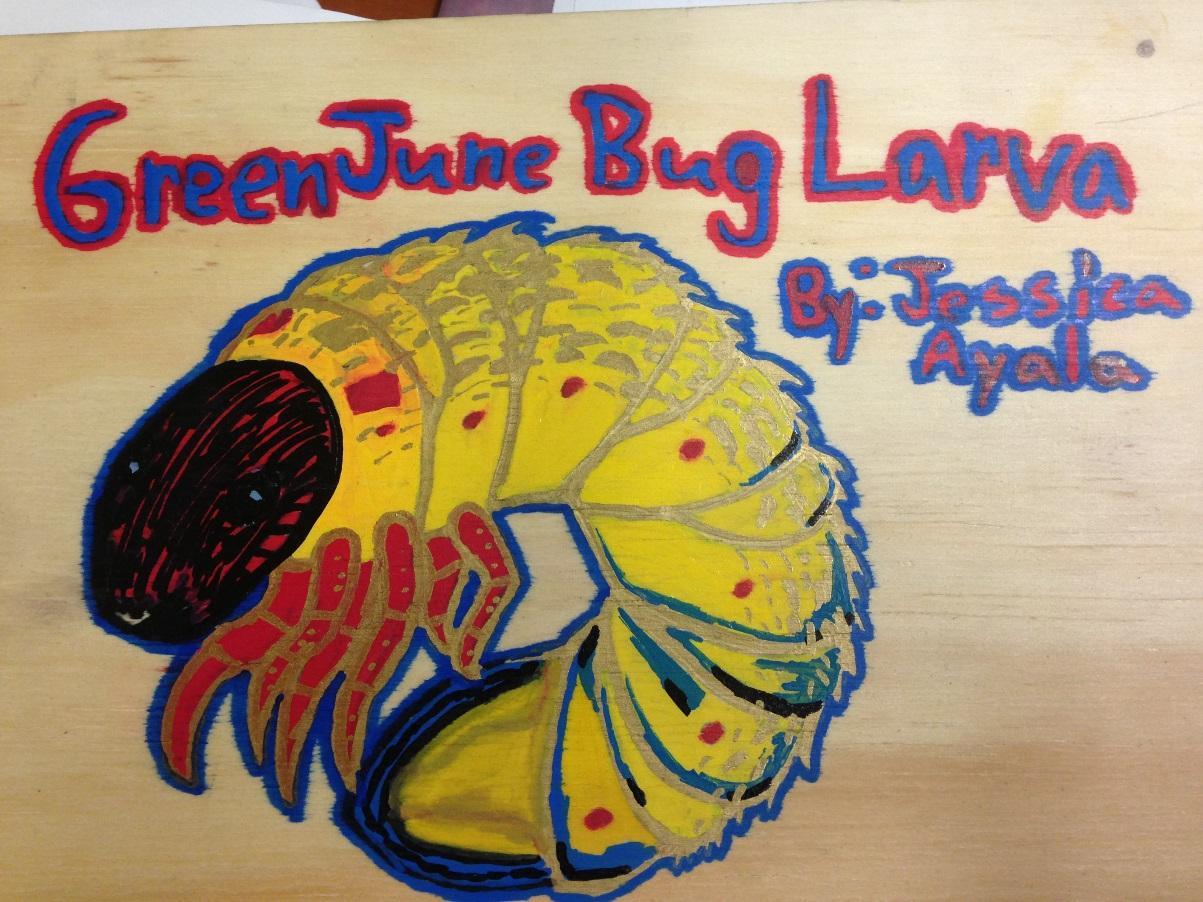Greenpoint Eco-Schools Update, from MS126
“I never knew that there was a whole other universe right under my feet!“ eighth grader, Jessica Ayala exclaimed. A student at MS 126, Jessica and nine other students recently completed the eight-week Eco-Schools Green STEM Afterschool Club where they studied soil, compost, and soil microbiology. As a veteran Afterschool Club member, Jessica has the distinction of being part of last year’s team and working with a permaculturist to design MS 126’s outdoor classroom and learning laboratory. This year the club learned what healthy soil is and how to create and maintain it; and they used MS 126’s new outdoor classroom to do it.
“ I learned that soil is the foundation for all life on earth. It is the Earth’s skin. I also learned about Green June Beetle Grub, nematodes, fungi, sow bugs and centipedes. These are nature’s recyclers or decomposers or “cleaner-uppers” — all these little creatures living in soil and compost. Who knew?
We took samples of soil from different places in the garden, places where there is a lot of foot traffic and places where there is little foot traffic. Eleven year old Randall grimaces as he tries to get a soil sample, “My patch (of soil) is hard and dry! I can hardly dig. And there is lots of plastic and there are wrappers.”
 “Mine’s easy,” beams Kimberlyn, as she collects soil close to the school building and near the water spigot –an area safe from the shoes and sneakers of young gardeners. When each child has collected their soil sample, we examine them for organisms, color, texture, smell.
“Mine’s easy,” beams Kimberlyn, as she collects soil close to the school building and near the water spigot –an area safe from the shoes and sneakers of young gardeners. When each child has collected their soil sample, we examine them for organisms, color, texture, smell.
“ I learned that….soil from separate areas of the same garden can be different in color, smell, and texture, says Jessica.
‘Soil that gets stepped on a lot doesn’t have a lot of microorganisms living it in,” adds Randall
Unlike people who recycle, Nature’s Recyclers do their job effortlessly. Recycling is the reason soil microorganisms exist. They help Nature decompose dead and decaying organic matter, like leaves, twigs, dead animals, other soil microorganisms and make new skin (top soil) for the Earth,
During the eight week unit, each student chose a microorganism to research and share what it looks like; identify whether it’s a primary, secondary or tertiary decomposer; how large it is; and whether it’s a chemical or physical decomposer. These students are obsessed with soil and for good reason. MS 126 has a nine raised beds and nine pocket planters in its garden; a three bin solar composter called Soil Cycle, and a team of active parents and teachers who contribute food scraps on a weekly basis.
When I asked Jessica what was the best part of the eight weeks, she recalled everything she had learned. “ Ok, let me think…was it how to harvest worm castings from a worm factory; how to clone Turkey Tail mushrooms; how to find the PH level in soils; the difference between soil and compost; or….. then, she pauses, “…hands down…it was working with the graphic artist. ”
Jan Mun is the graphic artist and “citizen soil scientist” who did the drawings for Newtown Creek Alliance’s brochure, An Introduction to Urban (SOIL) Bioremediation. She provided guidance and encouragement to Jessica and her classmates in drawing the likeness of their researched microorganism on to a 12 X 18 piece of wood that will be assembled into panels and installed in the outdoor classroom. Now, anyone who visits the garden can discover “the universe living under their feet.” When Jan saw Jessica’s rendering of the Green June Beetle all she could say is ,”Wow! Wow! Wow!”

By Fai Walker, Greenpoint Eco-Schools Sustainability Coach, MS 126



